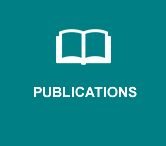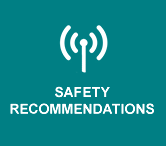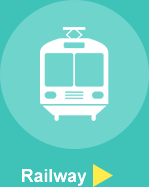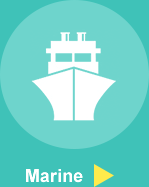MAIA DIGEST (Research & Analysis Report)
"MAIA DIGEST" was published by Marine Accident Inquiry Agency which is precursor as the marine accident investigation part of the JTSB.
These issues include explanation of a detailed analysis of casualties and case studies, the lessons learned from these examples.
We do hope that this easy to read newsletter will contribute to the future prevention of marine accidents.
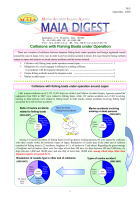 [No.5/2008] (PDF Document) (2.2MB) |
Collisions with Fishing Boats under Operation There are a number of collisions between Japanese fishing boats under
operation and foreign registered vessels around the coast of Japan every
year. In order to prevent similar accident in future, this issue features
fishing methods unique to Japan and analysis on actual marine accidents
and the lessons learned. |
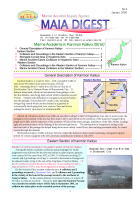 [No.4/2007] (PDF Document) (2.7MB) |
Marine Accidents in Kanmon Kaikyo (Strait)Kanmon Kaikyo is a narrow strait - with a navigable width of only about 500 meters at the narrowest part, off Moji Saki - extending about 15 miles from He Saki in Moji-ku of Kita-Kyushu City to Mutsure Shima of Shimonoseki City. It features sharp bend, which prevent mariners from getting a view into the distance, and strong tidal current which sometimes exceed 9 knots. Despite such difficulties to navigation, Kanmon Kaikyo sees the passage of more than 600 vessels a day, including foreign-flag vessels which use the channel as a gateway to economically developing East Asia, such as China and Korea, making the strait a vital artery for maritime traffic. |
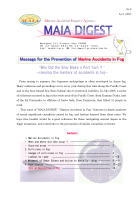 [No.3/2007] (PDF Document) (5.9MB) |
Message for the prevention of marine accidents in fogFrom spring to summer, the Japanese archipelago is often enveloped by dense
fog. Many collisions and groundings occur every year during this time along
the Pacific Coast and in the Seto Inland Sea (Seto Naikai) due to restricted
visibility. |
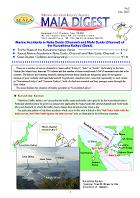 [No.2/2007] (PDF Document) (1.6MB) |
Marine Accidents in Kurushima Kaikyo (Strait)Sail Naka Suido with the tidal current, Sail Nishi Suido Against the tidal currentThere are a number of narrow channels in Japan called “Kaikyo”, “Seto”
or “Suido”. Particularly in the Seto Naikai (the Inland Sea), there are
724 islands and the number of those would reach 3,000 if unnamed rocks
are to be counted. The narrow and winding channels running between these
islands are dangerous spots for navigation because of poor visibility and
rapid tidal current. Significant casualties have occurred repeatedly in
such straits as “Kurushima Kaikyo” and “Kanmon Kaikyo”, both of which
are essential and busy passage routes through the Seto Naikai. |
 [No.1/2006] (PDF Document) (3.4MB) |
Message for the prevention of Marine Accidents due to typhoonsEvery year Japan is struck by many typhoons. A lot of serious marine accidents are caused by typhoons, bringing about loss of human life, ships and cargo. |




